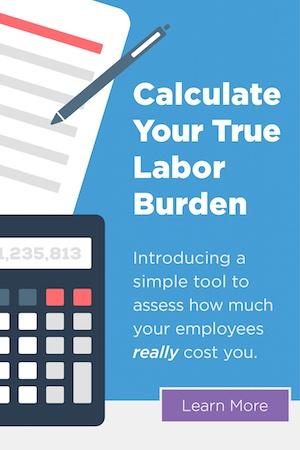How to keep your team safe while remaining compliant.
As confirmed by scientists at NASA’s Goddard Institute of Space Studies (GISS), the summer of 2023 was Earth’s hottest since global records began in 1880. That being said, employers like yourself should be prepared for the heavy heat that is upon us.
OSHA Requirements
The Occupational Safety and Health Administration (OSHA) by the U. S. Department of Labor doesn’t specifically address exposure to heat in the workplace. However, in section 5(a)(1) OSHA requires employers to provide a workplace free from hazards that are causing or are likely to cause death or serious physical harm to its employees.
Types of Heat Illness
According to OSHA, there are two types of heat illness that are differentiated based on physical signs:
- Heat exhaustion
- Dizziness
- Headache
- Sweaty skin
- Fast heartbeat
- Nausea and/or vomiting
- Weakness
- Cramps
- Heat stroke
- Red, hot, dry skin
- High bodily temperature
- Confusion
- Fainting
- Convulsions
Citations and Proposed Penalties
Aside from putting their workforce in harm’s way, employers can face severe fines by not preparing for the dangers of heat-related workplace hazards and failing to provide a safe work environment.
According to Akerman LLP, here are some examples of recent citations and proposed penalties issued by OSHA for heat-related violations:
- $65,000 in penalties against a waste management company after an employee died of a heat stroke while experiencing extreme heat while cleaning baghouses on a roof.
- $151,527 in penalties against a landscaping company after an employee died of heat exhaustion while trimming weeds. The employer stated that water was available, but was unsure about shade, air conditioning or acclimation.
Note that OSHA may assess penalties up to $16,131 per serious and other-than-serious violation. For willful or ongoing violations, the maximum penalty is $161,323 for each violation. Penalties will add up quickly if several employees are exposed to heat-related threats, or if the employer has incurred prior penalties for similar violations.
OSHA continues to issue citations under Section 5(a)(1) of the OSH Act, commonly referred to as the General Duty Clause. Since the implementation of the National Emphasis Program (NEP) in April 2022, OSHA has issued 53 citations over heat overexposure.
Be Aware of Your Local State Law Requirements
Aside from OSHA federal requirements, some states have their own requirements approved by OSHA. Always check the requirements specific to your state to ensure you remain compliant and keep your employees safe.
Here are a few examples of state-specific OSHA requirements:
- California: In temperatures over 80°F, employers must provide training, water, shade, and planning.
- Colorado: Has requirements specific to the agriculture industry.
- Minnesota: Has requirements for indoor places of employment.
- Oregon: Has specific requirements for various industries.
- Washington: Has an outdoor heat exposure rule that applies to outdoor workers throughout the year.
OSHA Proposes Standard on Indoor/Outdoor Heat Illness Prevention
On June 11th, 2024, OSHA submitted a proposed standard on indoor and outdoor heat illness prevention to the White House for review. The exact details are currently not available, but OSHA presented options regarding reaching a predetermined temperature, gradual exposure to heat, mandatory breaks that increase as temperatures increase, and require employers to develop and implement a written internal prevention policy. The proposal is currently under review and is foreseen to face legal challenges.
Tips to Stay Safe and Healthy
Here are some tips from OSHA to stay safe and healthy when facing this summer heat:
- Drink water every 15 minutes, even if you aren’t thirsty.
- Watch out for each other.
- Wear a hat and light-colored clothing.
- Know where you’re working if you need to call 911.
- Rest in a safe, shaded area.
- Provide training for your team.
- Have an emergency plan in place in case a heat stress incident arises.
Keeping Our Workforce Safe
Proactively protecting our employees against heat stress in the workplace not only contributes to their wellbeing, but also aligns with OSHA regulations. By implementing a comprehensive heat stress prevention plan that includes measures such as adequate hydration, frequent breaks, proper training, and monitoring weather conditions, employers can create an environment for workers to thrive while mitigating the risks associated with excessive heat exposure.
Prioritizing employee safety not only creates a more productive work environment, but also a healthier and more resilient workforce. When it comes to heat stress prevention, proactive measures are key to ensuring both regulatory compliance and employee wellbeing.


